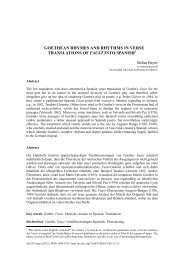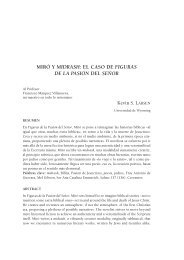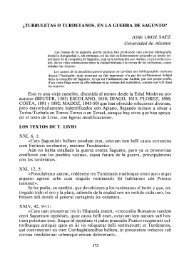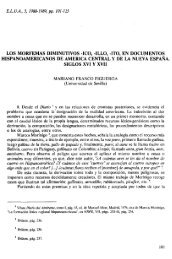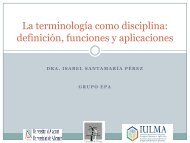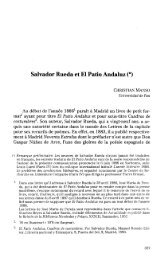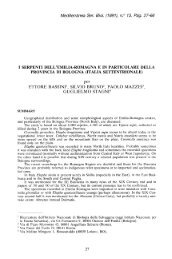ecological effects of marine protected areas empafish project ...
ecological effects of marine protected areas empafish project ...
ecological effects of marine protected areas empafish project ...
You also want an ePaper? Increase the reach of your titles
YUMPU automatically turns print PDFs into web optimized ePapers that Google loves.
EMPAFISH Booklet no. 1 Ecological <strong>effects</strong> <strong>of</strong> Atlanto-Mediterranean MPAs in the EU<br />
the <strong>protected</strong> area. Comprehensive scientific studies on the impact <strong>of</strong> divers<br />
are lacking, but observations point to a noticeable erosion <strong>of</strong> the benthic<br />
communities around the preferred diving spots (Zabala 1993). Some<br />
landscape-forming invertebrates, such as the gorgonian Paramuricea clavata,<br />
the red coral Corallium rubrum, or fragile bryozoans, and the spiny lobster<br />
Palinurus elephas that have been intensively studied show the negative effect<br />
<strong>of</strong> excessive frequentation by divers on benthic assemblages (Zabala 1993).<br />
Surveys <strong>of</strong> diving activity conducted from 1992 to 1995 on a study site where<br />
no diving was permitted before showed that diving increased 60-fold at the<br />
impact location. A significant decrease in the density <strong>of</strong> colonies <strong>of</strong> the<br />
bryozoan Pentapora fascialis was observed at the impact location one year<br />
after the start <strong>of</strong> the diving disturbance (Garrabou et al. 1998).<br />
An undesired side-effect <strong>of</strong> excessive frequentation by divers is the possible<br />
change in behaviour <strong>of</strong> a paradigmatic species such as Epinephelus<br />
marginatus, which has become accustomed to hand-feeding by divers and is<br />
not shy to humans (Zabala et al. 1997a, b).<br />
� Indirect <strong>effects</strong> (trophic cascades, changes in assemblage –<br />
trophic structure, etc.)<br />
Studies on the changes in fish assemblages and sea urchins derived from the<br />
establishment <strong>of</strong> the MIMR have shown the decrease <strong>of</strong> sea urchins parallel<br />
with an increase in herbivorous fishes in the MIMR, especially Diplodus<br />
sargus, D. vulgaris and Coris julis (Sala & Zabala 1996). Considering that the<br />
sea urchin Paracentrotus lividus is the major benthic herbivore in the NW<br />
Mediterranean, this study showed that the removal <strong>of</strong> fishing pressure on<br />
predatory fish would have a positive effect on herbivorous fishes, algal cover<br />
and sessile assemblages, through a cascade effect (Sala & Boudouresque<br />
1997; Pinnegar et al. 2000).<br />
44





